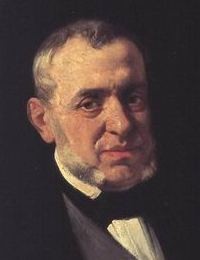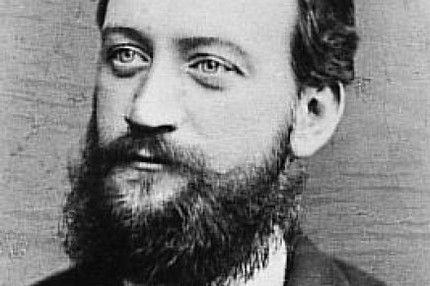
Alban Berg |
Alban Berg
Soul, how you become more beautiful, deeper after snow storms. P. Altenberg
A. Berg is one of the classics of music of the XNUMXth century. – belonged to the so-called Novovensk school, which developed at the beginning of the century around A. Schoenberg, which also included A. Webern, G. Eisler and others. Berg, like Schoenberg, is usually attributed to the direction of Austro-German expressionism (moreover, to its most radical branches) thanks to his search for an extreme degree of expressiveness of the musical language. Berg’s operas were called “scream dramas” for this reason.
Berg was one of the characteristic exponents of the situation of his time – the tragic crisis state of bourgeois society during the First World War and the years preceding the onset of fascism in Europe. His work is characterized by a socially critical attitude, denunciation of the cynicism of bourgeois mores, like the films of Ch. Chaplin, acute sympathy for the “little man”. The feeling of hopelessness, anxiety, tragedy is typical for the emotional coloring of his works. At the same time, Berg is an inspired lyricist who preserved in the XNUMXth century. romantic cult of feeling, so typical of the past nineteenth century. Waves of lyrical rises and falls, wide breathing of a large orchestra, pointed expression of string instruments, intonational tension, singing, saturated with many expressive nuances, make up the specificity of the sound of his music, and this fullness of lyrics is opposed to hopelessness, grotesque and tragedy.
Berg was born in a family where they loved books, were fond of playing the piano, singing. Charlie’s older brother was engaged in vocals, and this gave rise to young Alban to compose numerous songs with piano accompaniment. Wanting to get a professional education in musical composition, Berg began to study under the guidance of Schoenberg, who had a reputation as an innovative teacher. He learned from classical models, while at the same time acquiring the ability to use new techniques for new types of expression. Actually, the training lasted from 1904 to 1910, later this communication grew into the closest creative friendship for life.
Among Berg’s first independent compositions in style is the Piano Sonata, colored with gloomy lyricism (1908). However, the first performances of the compositions did not arouse the sympathy of the listeners; Berg, like Schoenberg and Webern, developed a gap between their leftist aspirations and the classical tastes of the public.
In 1915-18. Berg served in the army. Upon his return, he took part in the work of the Society for Private Performances, wrote articles, was popular as a teacher (he was approached, in particular, by the famous German philosopher T. Adorno).
The work that brought the composer worldwide recognition was the opera Wozzeck (1921), which premiered (after 137 rehearsals) in 1925 in Berlin. In 1927 the opera was staged in Leningrad, and the author came to the premiere. In his homeland, the performance of Wozzeck was soon banned – the gloomy atmosphere generated by the growth of German fascism was tragically thickening. In the process of working on the opera “Lulu” (based on the plays by F. Wedekind “The Spirit of the Earth” and “Pandora’s Box”), he saw that it was out of the question to stage it on stage, the work remained unfinished. Acutely feeling the hostility of the surrounding world, Berg wrote his “swan song” in the year of his death – Violin Concerto “In Memory of an Angel”.
Over the 50 years of his life, Berg created relatively few works. The most famous of these were the opera Wozzeck and the Violin Concerto; the opera “Lulu” is also performed a lot; “Lyrical Suite for Quartet” (1926); Sonata for piano; Chamber concerto for piano, violin and 13 wind instruments (1925), concert aria “Wine” (on the station by C. Baudelaire, translated by S. George – 1929).
In his work, Berg created new types of opera performance and instrumental works. The opera “Wozzeck” was written based on the drama “Woizeck” by H. Buchner. “There was no example of a composition in the world opera literature, the hero of which was a small, downtrodden person acting in everyday situations, drawn with such amazing relief” (M. Tarakanov). The batman Wozzeck, over whom his captain is swaggering, conducts charlatan experiments by a maniac doctor, changes the only expensive creature – Marie. Deprived of the last hope in his destitute life, Wozzeck kills Marie, after which he himself dies in the swamp. The embodiment of such a plot was an act of the sharpest social denunciation. The combination of elements of the grotesque, naturalism, uplifting lyrics, tragic generalizations in the opera required the development of new types of vocal intonation – various types of recitative, a technique intermediate between singing and speech (Sprechstimme), characteristic intonation breaks in the melody; hypertrophy of the musical features of everyday genres – songs, marches, waltzes, polkas, etc., while maintaining the wide fullness of the orchestra. B. Asafiev wrote about the conformity of the musical solution in Wozzeck with the ideological concept: “… I don’t know of any other contemporary opera that, more than Wozzeck, would reinforce the social purpose of music as a direct language of feelings, especially with such an amazing plot as drama Buechner, and with such clever and insightful coverage of the plot by music, as Berg managed to do.
The Violin Concerto became a new stage in the history of this genre – it was given the tragic character of a requiem. The concerto was written under the impression of the death of an eighteen-year-old girl, so it received the dedication “In Memory of an Angel”. Sections of the concerto reflect images of the young being’s short life and quick death. The prelude conveys a feeling of fragility, fragility and some detachment; Scherzo, symbolizing the joys of life, is built on the echoes of waltzes, landlers, contains a folk Carinthian melody; The cadenza embodies the collapse of life, leads to a bright expressionistic climax of the work; Choral variations lead to a purifying catharsis, which is symbolized by the quotation of J. S. Bach’s chorale (from spiritual cantata No. 60 Es ist genug).
Berg’s work had a huge impact on composers of the XNUMXth century. and, in particular, on the Soviet ones – D. Shostakovich, K. Karaev, F. Karaev, A. Schnittke and others.
V. Kholopova
- List of major works by Alban Berg →





